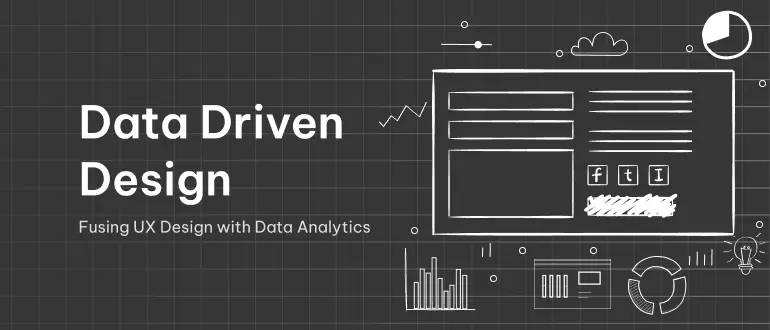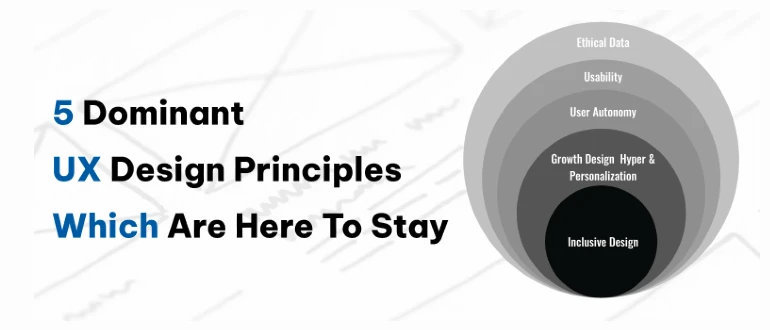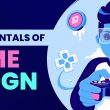Data-Driven Design - Not Just An Alliteration
Design is often looked at as an art rather than as science. In reality, it’s both. The art of design should be influenced by the science of data and information. - Cameron Chapman, author of two web design books: ‘Color for Web Design’ and ‘The Smashing Idea Book’.
Humans can be governed by two distinct forces when it comes to making decisions and acting upon them. One, we may act based on personal opinions, assumptions and intuition; perhaps a most natural thing to do. Two, we may do so on the basis of insightful data. The latter is what is referred to as a data-driven approach, where decisions are based on analyzed information and not variables like opinions or assumptions.
What is data driven design? Using quantitative and qualitative data to guide designs during digital product development is what is called data-driven design. Data-driven UX design involves studying user behavior, their choices and needs to strategize how best user-centric designs can be made for digital products. Both user satisfaction and business goals are to be kept in mind when doing so.
Think about it! UX designers around the world believe that without data, user experience design does not exist because without data the end product is simply a reflection of the design team's perceptions and experiences. And like it’s famously quoted on www - Designers aren’t users.
Data for UX Design
While UX design and Data Analytics are two distinct fields, both are absolutely essential. The foundation of successful products or services is built by intelligently integrating insights from data analytics into the UX design processes.
There are two broad types of data that UX designers depend on - Quantitative data and Qualitative data.
As the name suggests, Quantitative data is all about numbers. This includes objective insights into user behavior and interactions, to identify patterns and trends. For example, to make data driven website designs, designers can analyze website analytics to study which pages have high traffic, low engagement or high bounce rate and accordingly guide content and layout decisions for problem pages. Even when a page is re-designed, UX analytics data comes in handy to know if the new design is working or not.
Analytics tools, like Google Analytics, are excellent sources of quantitative data, like user demographics and engagement. Google Analytics also provides industry analytics to compare the performance of a website or an app in comparison to the industry average, and tools for exploring user behavior flows.
Heatmaps and click-tracking tools visually represent user interactions on a website or an app and are particularly useful to identify popular as well as problem areas for bettering design decisions.
A/B Testing compares two or more designs to help determine the most effective and intuitive design layouts or elements. Continuously running A/B or multivariate tests to improve a design can result in huge conversion increases, apart from deep insights into user behavior and experience.
Qualitative data is non-numerical and subjective. User feelings, opinions, perceptions and motivations come under this umbrella. How best to source this kind of data? User surveys and interviews are the best source for qualitative data. Focus groups can also help gather user feedback to improve apps or websites.

Big Data Strategy for UX Design:
Analyze - Integrate - Measure
Analyzing Data for Design
The main goal of analyzing data is to draw actionable insights that can guide the design process, by validating or questioning the designers’ assumptions about users. Some of the ways to do so include:
1. Creating informative and interactive visualizations from raw data, such as charts, graphs and maps. Data visualization helps with interpreting the information and identifying patterns and trends.
2. Comparing data across different user segments, which means parameters like mobile vs desktop users, new vs returning users, etc.
3. Context analysis, which means studying users’ interactions like location, time of day and even device used.
Integrating Data into the design process
One of the methods to integrate data into the design process can be:
1. Designers must start by defining the goals and objectives of the client’s project. At this point, specific metrics (KPIs) to measure success can be defined too.
2. Study the quantitative and qualitative data with regards to the specific project, for patterns and trends, with the help of data analysis tools.
3. The identified data insights need to be shared with the UX designers and other stakeholders, like product managers and developers. At this point, recommendations for improving the data driven product design can be sought.
Measuring the impact of design
The impact of data driven user experience is important to be measured. For this, the key performance indicators, established in the previous step, are studied. For example, has the user behavior or engagement changed after a webpage was redesigned? Or, has the conversion rate and revenue been impacted with a design update?
What about Creativity?
Design is intelligence made visible. — Alina Wheeler, author ‘Designing Brand Identity’
While it’s easy to interpret Alina’s quote as giving precedence to data, creativity remains an integral part of UX design. The ability to see things from different perspectives, to think outside the box and come up with innovative ideas and solutions has no substitute.
The approach for creating empathetic designs pays significant attention to the user’s feelings towards a product. Intuition enables designers to anticipate needs and design accordingly. Thus, a visually appealing web or app design draws as much on intuition as it does on data.
As subjective as it may seem, striking the right balance between data and intuition is a must. Data provides insights, while the designer’s intuition coupled with expertise of UX design principles may guide innovative features for user engagement. Over reliance on data may not help with innovation and a product may thus lack novelty and simply be one among many.
Logic Simplified is a leading game design and development company with over a decade experience in providing UI UX design services. Our game designers and game app developers follow the big data strategy for UX design, creating websites and apps which drive user engagement and maintain user satisfaction. Our design experiments are based on insights and measured through real-time data. We de-risk product ideas! Write to us at enquiry@logicsimplified.com or call us to know more.

 Get a Quote
Get a Quote











